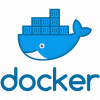Related Content
 |
4 Reasons to Use Cloud Testing for Digital Transformation Cloud computing makes data access more reliable and efficient, with less administration effort required, so testing in the cloud can accelerate your digital transformation. This helps guarantee quality and decrease time to market. Here are four more reasons to consider cloud testing for your digital transformation. |
|
 |
How Testers Can Use Docker to Shift Left and Automate Deployments Docker has several advantages over virtual machines: It’s easier to deal with, starts up faster, and requires fewer resources. Using Docker also can give testers more confidence in their releases. Developers use the same environment that will be used in production, which streamlines code delivery and shifts QA left. |
|
 |
Lessons Learned in Testing a UI Test Automation Tool How do you test a tool to be used for automated testing? If a tool executes an automated test that generates keyboard and mouse events to replay user actions, can the test emulate user input and control another instance of the tool to automatically record and play another test? Here's how you test the test tool. |
|
 |
How Cloud Automation Can Enhance Your Business The cloud supports the automation of your business and can make things run smoother and more efficiently. It also can help manage all the different moving parts of a company. Taking a deeper dive into these benefits can help you decide if you should add the cloud to your business plans. |
|
 |
Georgia Tech IoT Study: Takeaways for Smart Cities The internet of things has sky-high expectations, and smart cities, where devices connect across public and private sectors, is one of the drivers fueling the fervor. But there are also skeptics saying the IoT is slow to materialize, which poses questions about risks surrounding cyber security and privacy. |
|
 |
5 Myths about API Security APIs are designed to provide interfaces between multiple applications, allowing them to work together. From a security perspective, this is a powerful tool to have. Unfortunately, the effectiveness of APIs diminishes if they are misunderstood. Here are five common myths about API security, along with the facts. |
|
 |
The Blurred Lines between the Open Source and Closed Source Worlds The open source and closed sourced worlds need each other—not only for healthy competition, but more importantly, for healthy collaboration, too. Mukesh Sharma looks at recent collaborative efforts between the open source and closed source communities and what is driving these changes. |
|
 |
Building a Culture of Continuous Improvement A culture of continuous improvement means you are open to improving how you build and deliver. You don't accept the status quo; you choose how to work and feel empowered to change it if it no longer makes sense. Kevin Goldsmith gives some ideas for frameworks to adopt in order to move toward this people-first culture. |








